Develop and run a walking tour in Dublin that tells the history of the Troubles in Northern Ireland. That was the assignment brief given to students in my Northern Irish History class this semester, and they rose to the challenge.
The Troubles was a sectarian conflict between Protestant Unionists (Loyalists) and Catholic Nationalists (Republicans). Catholics were discriminated against by the Protestant majority since the creation of the state of Northern Ireland in 1920, and were effectively second class citizens. Inspired by the American Civil Rights movement, starting in the late 1960s Catholics peacefully protested for equality in relation to education, jobs and housing, but they were met with fierce resistance which often ended violently. Another factor which led to the outbreak of the Troubles was the fact that the Republicans wanted a united Ireland, free from British rule, the Loyalists wanted the six northern counties to remain under British rule and the British military, sent to keep the peace between the warring communities, sided with the Loyalists. The Troubles, which lasted thirty years, saw 3,720 people killed and thousands more injured, the majority being civilians.
Many events took place in Dublin directly connected to the conflict and that is what my students were instructed to research for their walking tour. There is a lot to consider when developing a walking tour – for example, what will the route of the tour be, where will it start and end, how many stops will there be, how long does it take to get to each stop, is there a suitable place to stop and talk? And that is before the actual research begins, and deciding what stories will be covered. As this was a group assignment, the students had to work out amongst themselves who would talk about what on the tour.
Every tour needs a good introduction and that job fell to Luiz Chein Vieira, who gave a Powerpoint presentation in the Academic Centre in Leeson Street, giving an overview of The Troubles and what we were going to hear about on the tour, after which we made our way to our first stop on the tour, a house in Harcourt Street. At this stop, Luiz explained group that this was the house in which Edward Carson, the founding father of the Unionist movement and the Ulster Volunteer Force (UVF), was born. Luiz told us how the UVF was set up in 1913 in response to the British government attempting to give Ireland some measure of independence; the Unionists did not want to break away from Britain and threatened to take up arms to prevent this from happening. Fifty years later the UVF was the paramilitary group that brought the gun back into Irish politics. We would hear later on the tour how they were responsible for many attacks in Dublin during The Troubles.
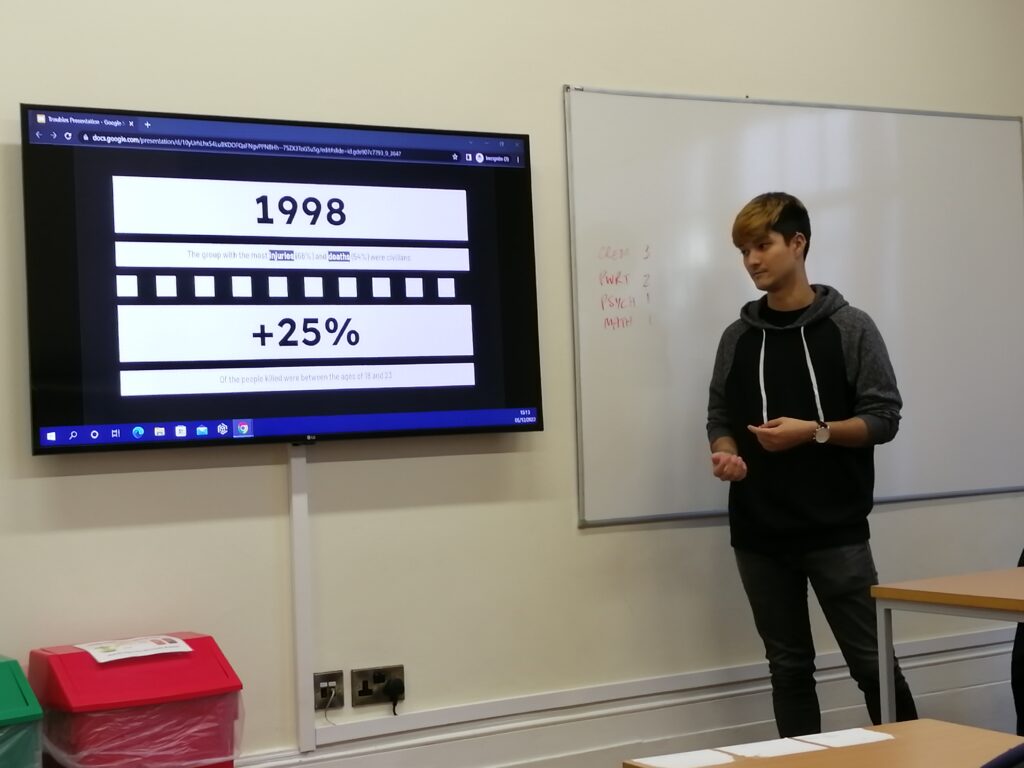
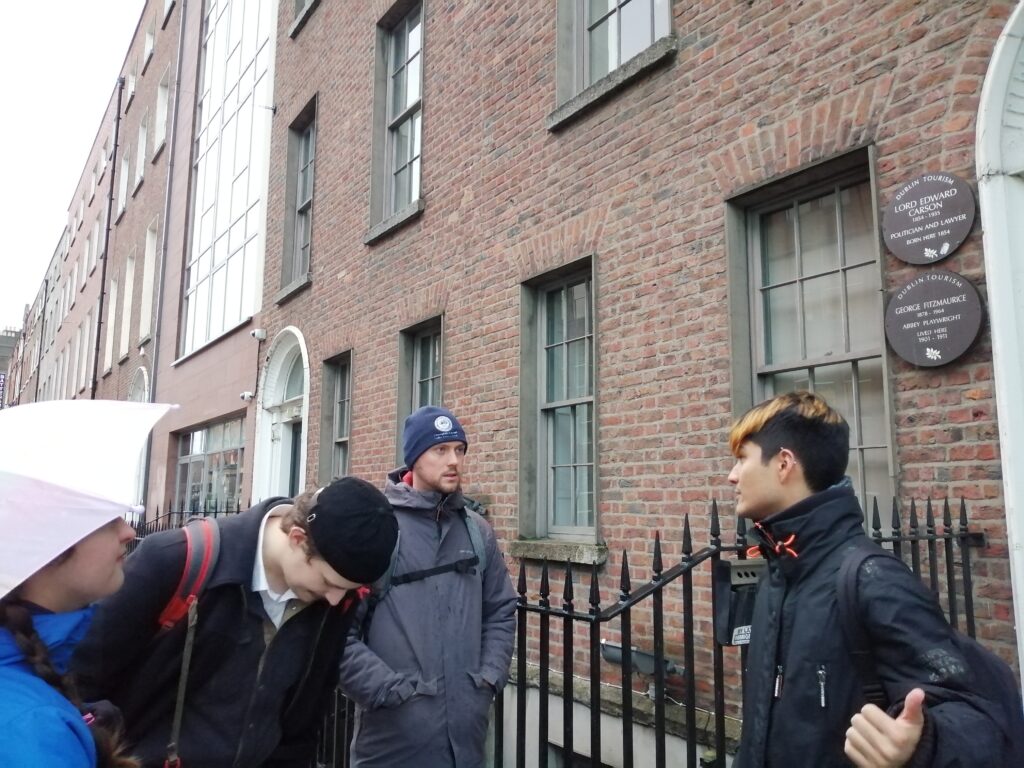
Next up on the tour was Fiona Murphy, who brought us to nearby Dawson Street where she talked about the history of Orange Order, a Protestant organisation who were, according to Fiona, “super-fans of William of Orange who like parades, Protestantism, the 12th of July (hybrid celebration of the Battle of the Boyne & the Battle of Aughrim), bonfires, burning flag and effigies in said bonfires, the UK, direct rule from Westminster, and “cultural celebration”. Fiona showed us where the first Orange Lodge was founded in Dublin.

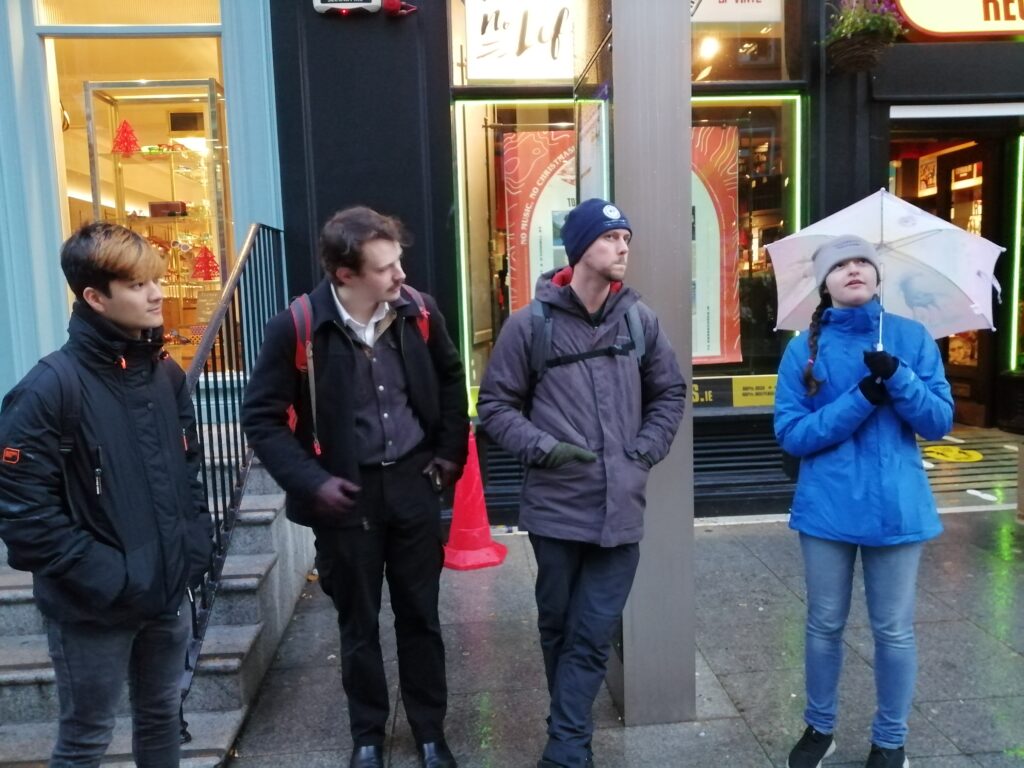
Our next stop found us around the corner on Leinster Street South where John Player presented on the Dublin/Monaghan bombings which were carried out by the UVF in response to efforts at finding peace in the North. On Friday 17th May 1974, three cars exploded in the centre of Dublin. Ninety minutes later, a fourth bomb exploded in Monaghan town. Thirty-three people died that day, 258 were wounded. It was the single greatest loss of life throughout the entirety of the Troubles. John also showed us the exact spot where one of the car bombs exploded, scarring a nearby wall. John continued to Merrion Square and showed us the site of the former British Embassy, which was destroyed by fire by citizens of Dublin on the night of 2nd February 1972 in response to the events known as ‘Bloody Sunday’ when British paratroopers shot dead fourteen Catholics in Derry who were protesting peacefully to end internment.
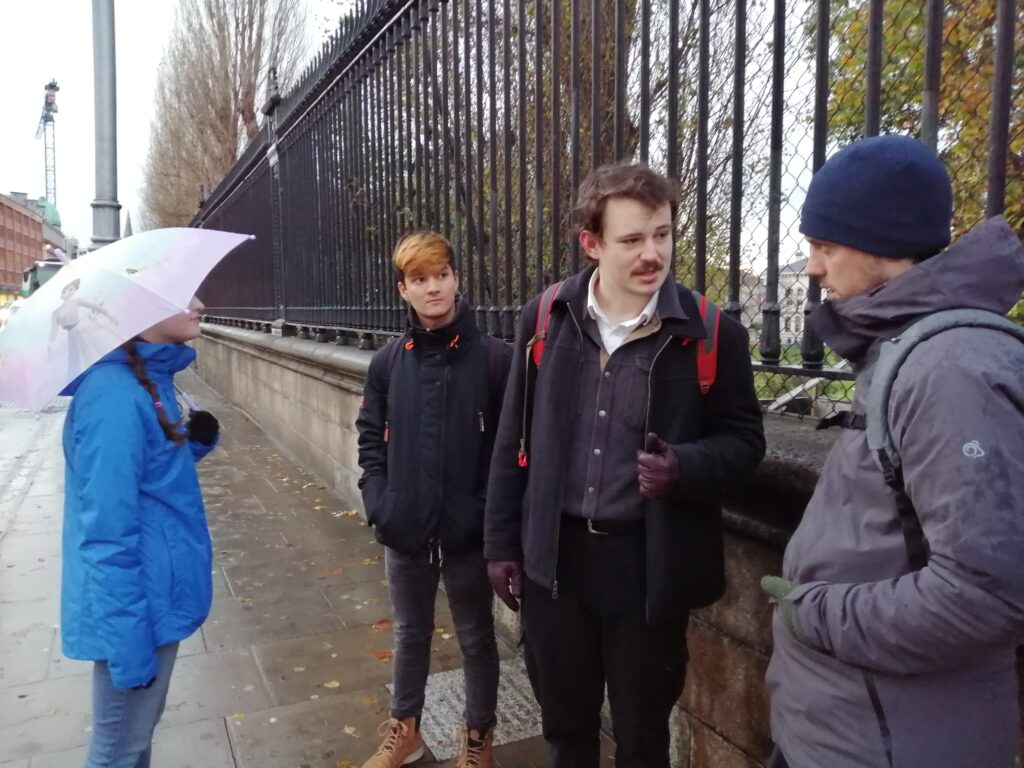
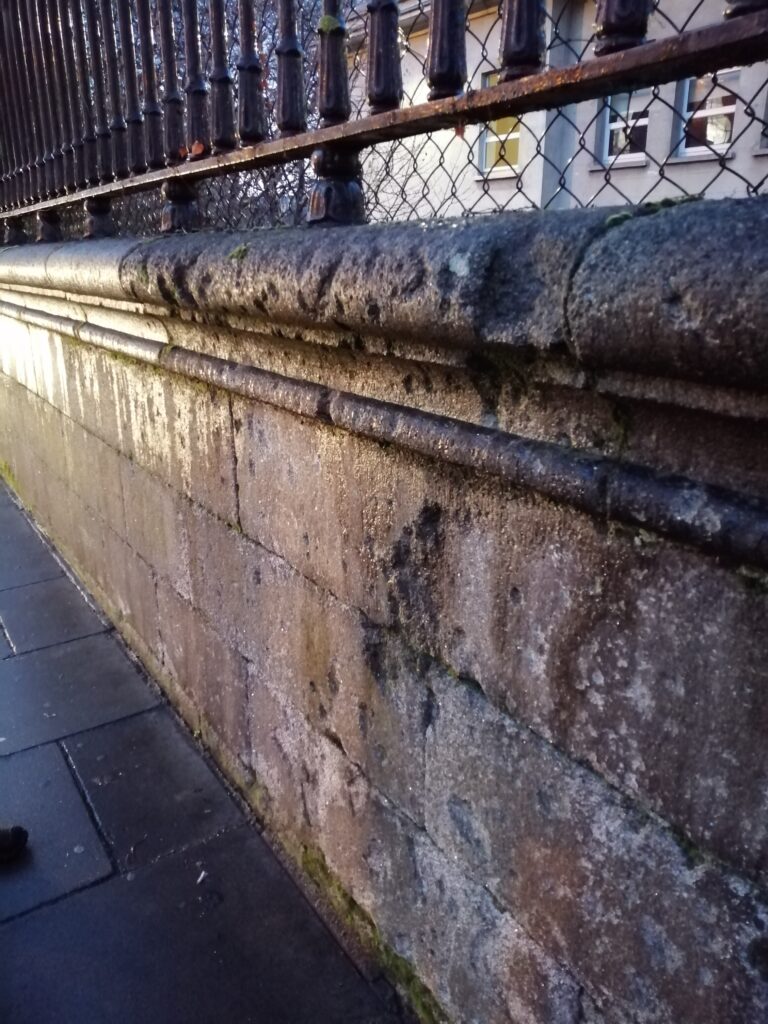
Our final stop on the tour took us to St. Stephen’s Green, where Charles Gagnon talked about the bombing of Republican symbols in the early part of the conflict by the UVF, such the bombing of the statue of Wolfe Tone at St. Stephen’s Green Park. Tone is seen as the father of Republicanism. In 1971, a group of Loyalists managed to plant and detonate a bomb that blew the sculpture into several pieces. We ended our tour at Boston College’s Irish campus, opposite the Wolfe Tone statue. A Boston College research project carried out interviews with both Republican and Loyalist paramilitaries in the 2000s. However, controversy soon followed when these interviews were released revealing information about killings etc that had taken place during the conflict. The Police Service of Northern Ireland (PSNI) demanded the interviews were handed over, they would be used as evidence to arrest and convict former paramilitaries. Because of the fiasco caused by the Boston College Tapes, people are reluctant to tell their stories, to this day, of what happened in the Troubles.

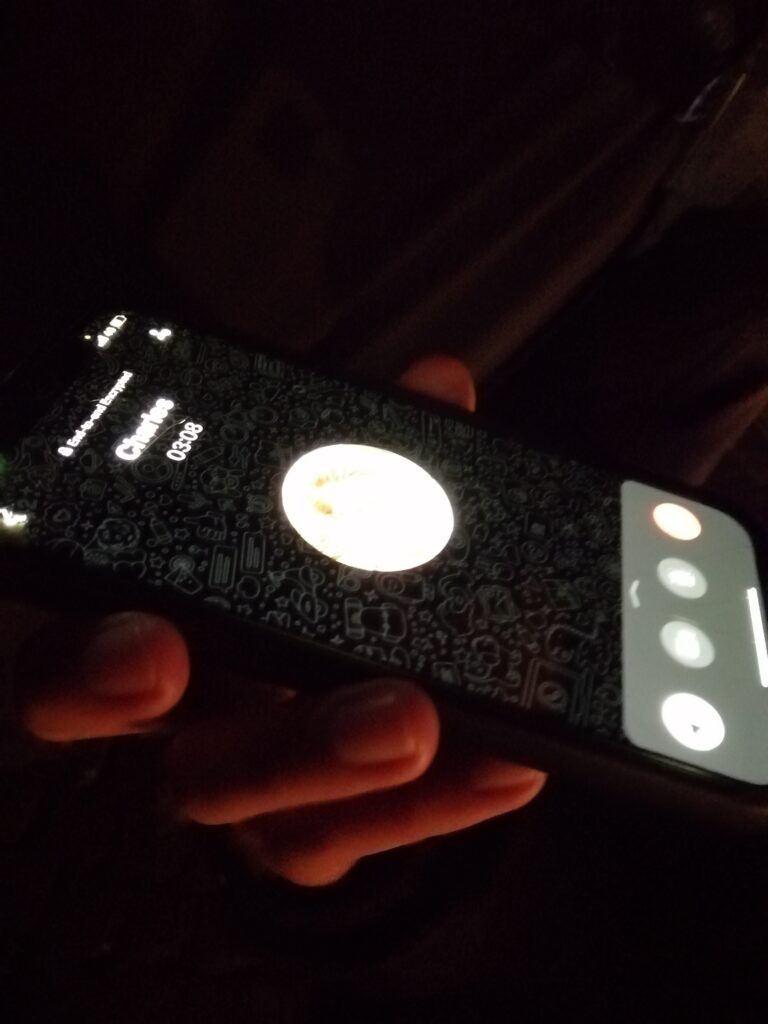
Our ‘tourist’ Tony Langan, Assistant Director at Champlain College Dublin was very impressed by the tour, which lasted two and a half hours. He said it was an ”Amazing tour about the Troubles in Dublin. It is easy to forget how much Dublin was impacted by The Troubles but on this tour we learnt an awful lot about this history on our own doorstep including many buildings and memorials that I walk past every day and had no idea they were so important to this time of Irish history. Amazing experience”.
Liz Gillis
Lecturer: Northern Ireland History Class
Dublin